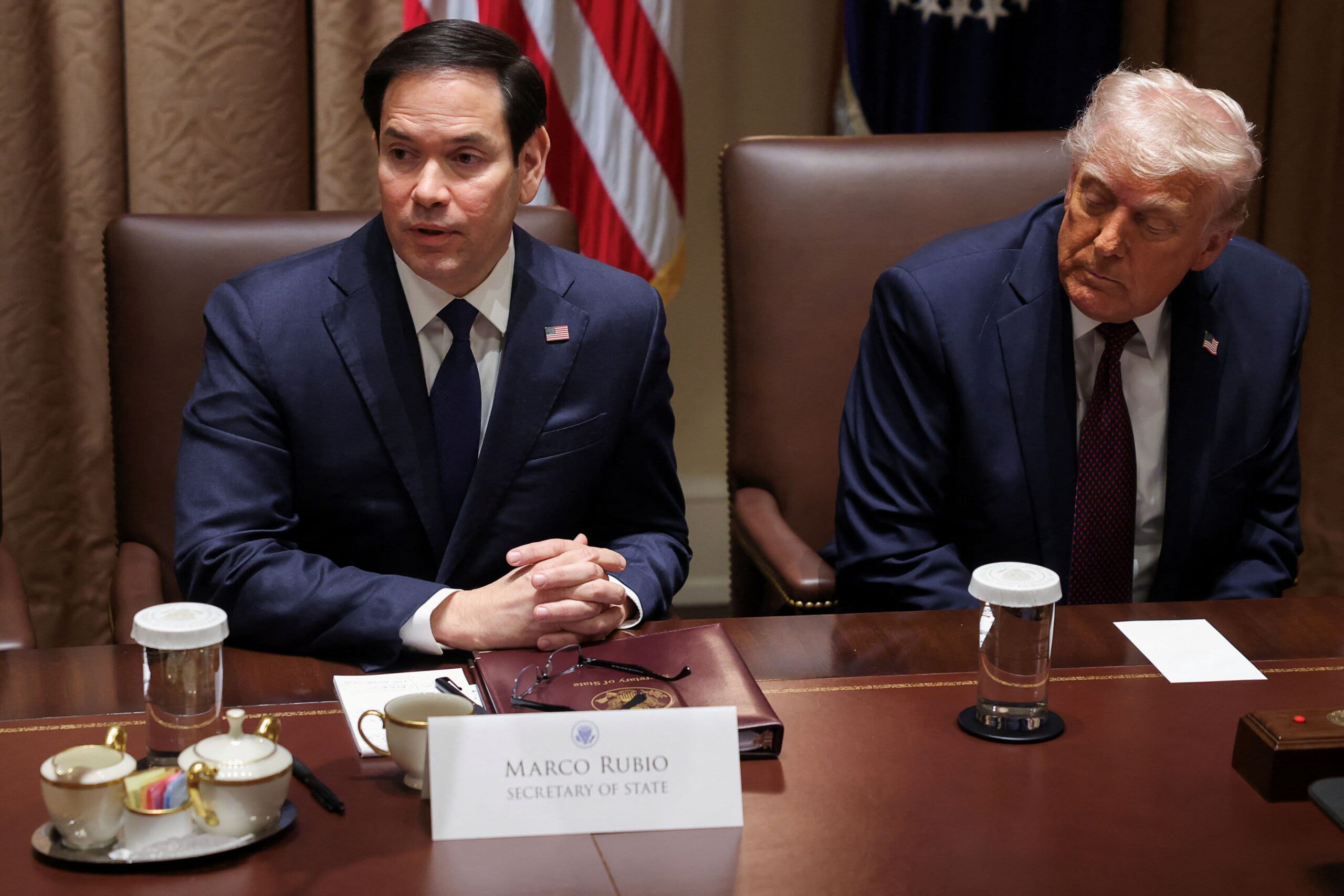
With the U.S. economy solid but still facing elevated risk of recession — or, as President Trump described it in May, in a “transition period” — states are pitching themselves as the most stable place for companies to locate no matter what happens to the economy.
“Multiple international headquarters, hundreds of billions of committed investments across a variety of industries and the economy to handle it all,” the Indiana Economic Development Corporation promises.
“Georgia job creation remains strong,” that state’s Department of Economic Development assures. “The State of Georgia is celebrating another year of sustained momentum for business recruitment and expansions.”
“Wisconsin is one of the most fiscally responsible states in the nation,” the state’s Economic Development Corporation says.
A CNBC analysis of all 50 state economic development websites finds that the economy — and factors relating to it such as job growth, foreign direct investment and the housing market — are the most frequently mentioned selling point this year. Economy popped up 222 times in our tally, well ahead of the next most mentioned factor, infrastructure, at 203. Under the methodology for CNBC’s annual business competitiveness study, America’s Top States for Business, that makes Economy the heaviest weighted category in 2025.
But measuring state economies is more challenging than usual this year. Sweeping federal budget cuts are threatening to throw sand in the gears of an economic engine in many states. And tariffs — so far, a wildly moving target — are already crimping the economies of states that depend on international commerce.
“If you don’t know what your product is going to cost, if you don’t know if your export market is going to be there in six months, if you don’t understand the terms that you’re trading on, it makes it really hard to say, ‘Okay, we’re gonna take a risk and invest in this new product line’,” said Dan Anthony, president of Trade Partnership Worldwide, a Washington, D.C.-based economic data firm.
To score each state’s economy in this year’s Top States for Business study, we considered traditional measures such as state gross domestic product growth, job growth, state fiscal health, the number of major corporations headquartered in each state, and the strength of the local housing market. But we also considered how dependent each state is on a shrinking federal government for spending and hiring. And we considered each state’s exposure to a trade war, using data compiled for us by Trade Partnership Worldwide.
“The big things that we start out looking at is just really exposure to international trade, and particularly the goods trades,” Anthony said.
In addition, the data looks specifically at states’ exposure to China, which is at the heart of the trade war.
Some states are particularly vulnerable should the economy take a turn for the worse. But these states have what it takes to navigate a recession.
10. South Carolina
While The Palmetto State is among the states most vulnerable to increased tariffs — international goods trade made up one-third of its GDP last year — South Carolina enters this unsettled period with one of the fastest growing economies in the nation, and some of the best job growth. Notably, that job growth is not occurring in the manufacturing sector, including the auto industry, where tariff increases could hit hard. Instead, the state’s biggest job growth is in construction, where employment rose more than 7% year-over-year in April, according to the U.S. Bureau of Labor Statistics. Federal revenue made up about 33% of the state budget last year, roughly in line with the national average.
2025 Economy Score: 274 out of 445 Points (Top States Grade: B-)
GDP (2024): $273.3 billion (+4.2%)
Job Growth (2024): +2.4%
Debt Rating and Outlook (Moody’s): AAA Stable
Share of state spending from federal funds: 33%
International Goods Trade (2024): $91.4 billion (33.4% of GDP)
Major Corporate Headquarters: None
9. Georgia
The Peach State’s diverse economy will come in handy should the national economy worsen. Seventeen companies in the Standard & Poor’s 500 are headquartered in Georgia, and while the home of the Port of Savannah is heavily dependent on international trade, there is plenty of other business to take up the slack in a slowdown. Georgia entered 2025 with solid economic growth, though job growth dropped off considerably. Hiring in most sectors, except for health care, has leveled off, or, in some cases, declined.
2025 Economy Score: 277 out of 445 Points (Top States Grade: B)
GDP (2024): $701 billion (+3.4%)
Job Growth (2024): +0.9%
Debt Rating and Outlook (Moody’s): AAA Stable
Share of state spending from federal funds: 29%
International Goods Trade (2024): $197.6 billion (28.2% of GDP)
Major Corporate Headquarters: Home Depot, Delta Airlines, Coca-Cola
8. Utah
The Beehive State’s economy was buzzing last year — leading the nation in GDP growth, and near the top for job growth. Utah‘s tech sector is a major driver, but some of the biggest job gains occurred in construction as the state tries to get ahead of a severe housing shortage.
For years, landlocked Utah has been pursuing the concept of an “inland port” to better link its dynamic economy to the rest of the world. The idea has morphed from a single, giant facility to 13 smaller ones around the state, but now, Utah’s embrace of international trade could backfire on the state’s economy. Utah’s international goods trade makes up nearly 17% of state GDP. And Trade Partnership Worldwide estimates that retaliatory tariffs from other countries could increase Utah business costs by up to 30%.
2025 Economy Score: 279 out of 445 Points (Top States Grade: B)
GDP (2024): $235.7 billion (+4.5%)
Job Growth (2024): 1.7%
Debt Rating and Outlook (Moody’s): AAA Stable
Share of state spending from federal funds: 29%
International Goods Trade (2024): $40 billion (16.9% of GDP)
Major Corporate Headquarters: Extra Space Storage
7. Idaho
The Gem State’s economy continues to dazzle, with solid growth last year. The state’s housing market, which has been on a bit of a roller coaster ride in recent years, has stabilized nicely for now, and new home construction is taking off. Idaho is also relatively insulated from tariffs, with limited international trade and tiny exposure to China. But Idaho depends on the federal government for a comparatively large share of state spending. In February, Republican Gov. Brad Little warned of a potential “economic shock” from the Trump budget cuts, but said Idaho had the wherewithal to withstand it.
2025 Economy Score: 288 out of 445 Points (Top States Grade: B)
GDP (2024): $99.6 billion (+3.9%)
Job Growth (2024): 1.5%
Debt Rating and Outlook (Moody’s): AAA Stable
Share of state spending from federal funds: 40%
International Goods Trade (2024): $13.5 billion (13.6% of GDP)
Major Corporate Headquarters: Micron Technology, Lamb Weston Holdings
6. Washington
The Evergreen State is fertile ground for entrepreneurs. A new business starting up in Washington stands a better chance of survival than in any other state, according to an analysis of Bureau of Labor Statistics data by Simply Business, a national insurance marketplace. Researchers found that businesses in the state stand an 86.4% chance of surviving their first year, 89.3% in their second year, and 91.8% in their third year. The broader economy in Washington was in the top five for growth last year, though job growth has slowed since the beginning of this year. The state is relatively well insulated from federal budget cuts, but it would be on the front lines of a trade war with China. With China accounting for more than 16% of Washington’s international goods trade, it is the fourth most exposed state.
2025 Economy Score: 296 out of 445 Points (Top States Grade: B+)
GDP (2024): $702 billion (+3.7%)
Job Growth (2024): 1.7%
Debt Rating and Outlook (Moody’s): AAA Stable
Share of state spending from federal funds: 26%
International Goods Trade (2024): $109.6 billion (15.6% of GDP)
Major Corporate Headquarters: Amazon, Microsoft, Costco
5. New York
The size and scope of the Empire State’s economy should help to insulate it somewhat from the impacts of tariffs and federal budget cuts. Only California is home to more major corporations than New York. But federal funding does account for a relatively large portion of the state budget. Democratic Gov. Kathy Hochul said in April that Trump budget cuts could impact some $1.3 billion in federal funding to the state, and warned that tariffs could result in 280,000 lost jobs. Those impacts would be significant, but all is relative in a state with a general fund budget of more than $110 billion, and a workforce of nearly 10 million. Only about 53,000 of those employees — less than half of one percent — work for the federal government.
2025 Economy Score: 298 out of 445 Points (Top States Grade: B+)
GDP (2024): $1.83 trillion (+2.4%)
Job Growth (2024): 1.8%
Debt Rating and Outlook (Moody’s): AA1 Stable
Share of state spending from federal funds: 40%
International Goods Trade (2024): $251.6 billion (13.7% of GDP)
Major Corporate Headquarters: American Express, JPMorgan Chase, Pfizer
4. Delaware
While growth in The First State was moribund last year, Delaware’s economic foundation is sound, and well-insulated from the upheaval coming from Washington. The state does have some exposure to international trade, but only a small portion of that — about 8% — is with China. The state is among the least dependent on the federal government, which accounts for just a quarter of state spending and about 0.8% of the workforce. Delaware has lost some of its allure as a place to incorporate, following court decisions seen as unfriendly to business — like the one last year voiding Tesla CEO Elon Musk’s compensation package. But it was still the second most popular state in which to start a business last year, after Wyoming.
2025 Economy Score: 317 out of 445 Points (Top States Grade: A-)
GDP (2024): $79.7 billion (+2.1%)
Job Growth (2024): 0.9%
Debt Rating and Outlook (Moody’s): AAA Stable
Share of state spending from federal funds: 25%
International Goods Trade (2024): $15.6 billion (19.6% of GDP)
Major Corporate Headquarters: DuPont de Nemours, Incyte
3. North Carolina
Year after year, The Tar Heel State turns in solid growth, and last year was no exception. It is a major reason that North Carolina is CNBC’s Top State for Business overall in 2025. North Carolina’s housing market, while suffering shortages exacerbated by last year’s Hurricane Helene, nonetheless does reasonably well on affordability, according to data from the National Association of Homebuilders. The state is somewhat sheltered from federal budget cuts — federal employees make up just 1% of the workforce. But tariffs are a concern in a state that relies heavily on international trade.
2025 Economy Score: 322 out of 445 Points (Top States Grade: A-)
GDP (2024): $661.9 billion (+3.7%)
Job Growth (2024): 0.9%
Debt Rating and Outlook (Moody’s): AAA Stable
Share of state spending from federal funds: 38%
International Goods Trade (2024): $133.8 billion (20.2% of GDP)
Major Corporate Headquarters: Bank of America, Duke Energy, Nucor
2. Texas
They say everything is bigger in Texas, and that includes the economy — the second biggest state economy after California. That should be especially helpful in these tumultuous times. While The Lone Star State is heavily reliant on the federal government in its budget, federal employees make up less than 1% of the state’s vast workforce. And while international goods trade is an important part of the Texas economy, only a small percentage of that trade, about 6%, is with China. The state enters these tumultuous times with solid finances, and a wealth of foreign direct investment.
2025 Economy Score: 348 out of 445 Points (Top States Grade: A+)
GDP (2024): $2.17 trillion (+3.6)
Job Growth (2024): 1.3%
Debt Rating and Outlook (Moody’s): AAA Stable
Share of state spending from federal funds: 36%
International Goods Trade (2024): $857.7 billion (39.5% of GDP)
Major Corporate Headquarters: ExxonMobil, Oracle, AT&T
1. Florida
The Sunshine State tops CNBC’s Economy rankings for a third consecutive year in 2025. Economic growth and job growth remain solidly in the top ten, state finances are strong, and the state is a leader in new business formations. Florida is a major player in international trade, but it comprises a relatively small percentage of the state’s overall economy. And only a small percentage of that international trade is with China, leaving the state in a better position than many when it comes to tariffs. Florida depends on the federal government for about 34% of its budget — and roughly two-thirds of its $34 billion Medicaid budget. That has Floridians keeping a wary eye on Washington.
2025 Economy Score: 363 out of 445 Points (Top States Grade: A+)
GDP (2024): $1.34 trillion (+3.6)
Job Growth (2024): 1.4%
Debt Rating and Outlook (Moody’s): AAA Stable
Share of state spending from federal funds: 34%
International Goods Trade (2024): $185 billion (13.8% of GDP)

